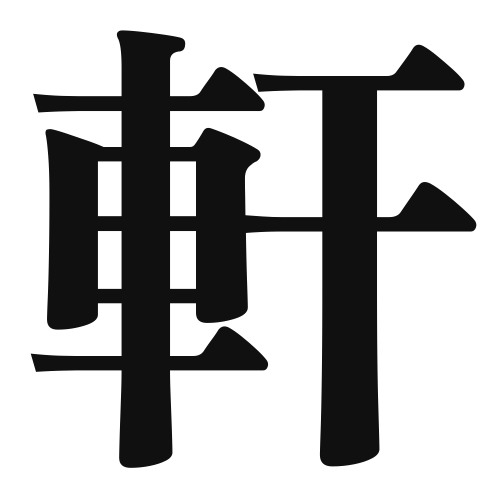1. Overview of Meaning
The kanji “軒” (pronounced “ken” or “noki”) primarily means “eaves” or “roof overhang.” It refers to the part of a building that extends beyond the walls, providing shelter from rain and sun.
2. Formation and Radical
The kanji “軒” is a phonetic compound (形声文字) that combines the radical for “vehicle” (車) with the phonetic component “ken” (ケン). This combination suggests a connection to structures that provide shelter, such as buildings or vehicles.
The radical of “軒” is 車, which relates to vehicles and transportation, emphasizing the idea of protection and coverage.
3. Examples of Usage
Common words and phrases that include “軒” are:
- 軒先 (noki saki) – eaves
- 軒下 (noki shita) – under the eaves
Example sentence in daily conversation:
「雨が降ってきたので、軒下に避難しましょう。」
(“Since it’s starting to rain, let’s take shelter under the eaves.”)
4. Synonyms and Antonyms
Similar kanji with related meanings include:
- 屋根 (yane) – roof (more general term for the top covering of a building)
Antonyms include:
- 開放 (kaihō) – openness (suggesting exposure rather than shelter)
5. Cultural and Historical Background
The kanji “軒” has significant ties to Japanese culture, particularly in traditional architecture where eaves play a crucial role in protecting homes from the elements. The design of eaves is often seen in temples and shrines, symbolizing a welcoming space.
Proverbs and idiomatic expressions related to “軒” include:
- 「軒を貸して母屋を取られる」 (noki o kashite moya o torareru) – “Lending the eaves and losing the house,” which means to be taken advantage of by someone you help.
